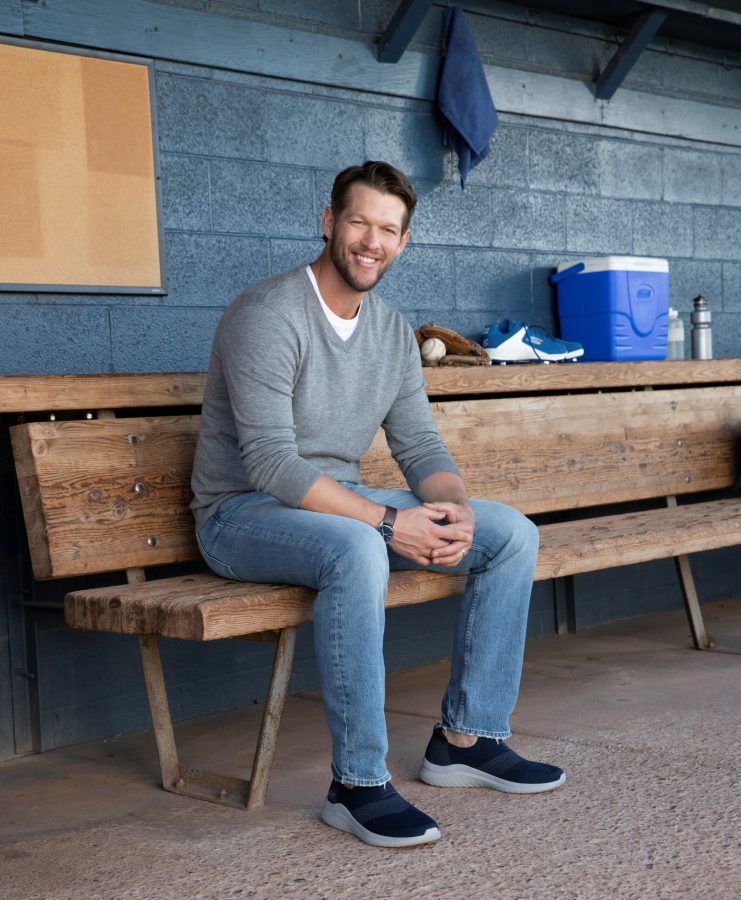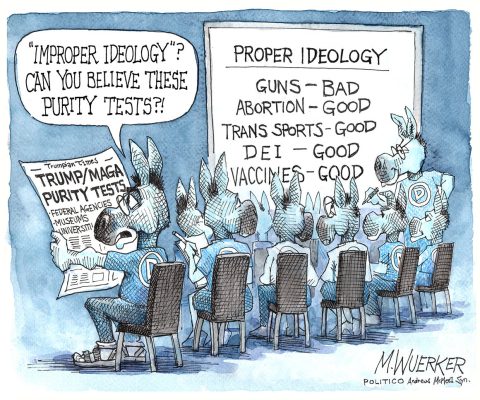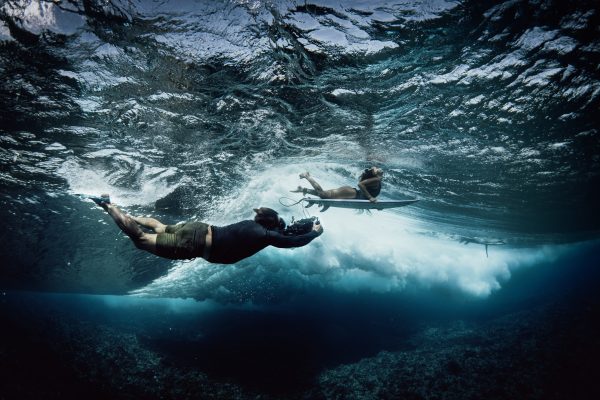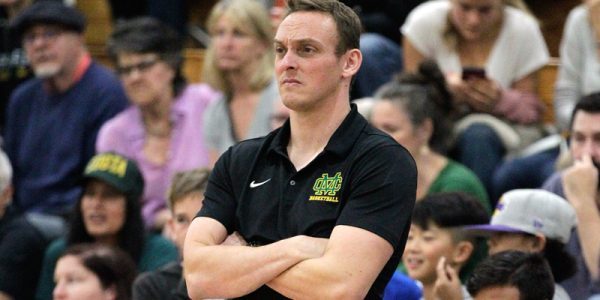by Paul Teetor
They started the NBA season with legit championship aspirations.
They ended by not even making the playoffs.
The epic failure stunned players, coaches, owners and fans.
Sound familiar?
Sound like the Lakers?
Yep.
But it’s not that whiny, over-the-hill, alleged-super-star-studded team of LeBron and a bunch of losers that we’re talking about now.
No, just a week after the Lakers missed the playoffs and immediately fired Coach Frank (scapegoat) Vogel, we’re talking about the LA Clippers.
Friday night’s shocking 105-101 loss to the New Orleans Pelicans made it official: for the first time since the 2004-05 season both the Lakers and Clippers were done before the NBA playoffs even got started Saturday afternoon.
Following UCLA’s loss in the round of 16 and USC’s loss in the first round of the NCAA playoffs last month, it’s been a short, nasty and brutal spring for Los Angeles hoops fans. Bottom line: the traditional postseason fun and excitement – rushing home to catch the second half of a key playoff game, talking about it over the water cooler the next day — is over before it ever got started locally.
The glory days of Shaq and Kobe and their three-peat, of Kobe and Pau and their repeat, even of Chris Paul and Blake Griffin and their trips deep into the playoffs, are ancient history.
Now the fans are hearing the same old song: wait till next year.
But the lyrics are getting old and the melody is more sour than sweet.
Oh, sure, the Clippers made the play-in mini-tournament, whereby the teams that finished 7-10 in the Western Conference battled it out for the last two spots in the real playoffs.
But even there the Clippers got screwed after finishing the regular season in eighth place. Under the old format they would have automatically qualified for the playoffs. But under the new format adopted last season, they qualified only for the play-in tournament.
First they had to play the seventh place Minnesota Timberwolves, with the winner earning the 7thseed. The loser of that game would then have to play the winner of the 9-10 game between the Pelicans and the San Antonio Spurs for the 8th, and last seed.
In a bruising, emotional game the Timberwolves, led by former Clipper spark plug Patrick Beverly, came back from 7 points down to edge the Clippers 109-104 last Tuesday night.
Beverly, a fiery, combative point guard who guards his man like he insulted his sister, taunted, trolled and mind-tripped his former teammates all game long. He never stopped chirping at Clipper players he still considers friends and he almost baited Marcus Morris into a technical foul and an ejection by grabbing and holding his arm.
Beverly scored 7 points while grabbing 11 rebounds, an astounding feat for a 6-foot-2 guard. But the box score didn’t show his real value: his tenacious defense and the cockiness and belief he imbued in a team that needed every bit of it to beat the playoff-tested Clippers, who made it all the way to the Western Conference Finals last season with pretty much the same roster – including Beverly, who was the fire to Paul George’s ice.
After the game, George lamented that the team had traded Beverly before the season when they couldn’t agree on contract terms with him.
“All that stuff he does is for show,” George said. “I love it. I miss it, when he’s doing it for our side, because it’s contagious.”
For his part, Beverly made it clear he still loves his former teammates, but has a major beef with the Clippers management that shipped him out of LA.
“I gave my blood, sweat and tears to that organization,” he said. “To be written off by them – he’s injury prone, he’s too old – to be able to play them in a play-in game and beat their ass, there’s no better feeling.”
As the buzzer sounded, Beverly celebrated by ripping off his jersey, tossing it into the frenzied Wolves home crowd and flexing his arms towards the Clippers bench. Soon afterwards he posted an expletive-laden Instagram post calling out the “weak-ass Clippers.”
A day later the league fined him for his outburst.
For his part, all-star Paul George, the Clippers default leader in the absence of superstar Kawhi Leonard, played well but did not live up to his self-anointed nickname of Playoff P. He hit only 10 of 24 shots while scoring 34 points, and he didn’t step forward to stop the bleeding while the Wolves were making their late game comeback from 7 points down.
But it was perhaps too much to expect Playoff P to make an appearance so soon after missing 43 games with an elbow injury. He had only been back with the team for 10 days and was just working his way into the team’s game plan and free-flowing offense engineered by Coach Ty Lue.
That Timberwolves loss set the stage for the Clippers last stand: a Friday night game against the New Orleans Pelicans. The stakes could not have been higher: Winner gets the eighth seed. Loser goes home for the season.
This time the Clippers had the home court advantage, but they woke up to a nasty surprise, the latest in a season full of nasty surprises: Paul George had entered the NBA’s health and safety protocols after a positive Covid test. Translation: he would not be able to play in the game.
The Clippers seemed to be in a state of catatonic shock as the game got underway without their two best players, PG and Kawhi. The Pelicans raced out to a 16-point lead as their two stars – former Laker Brandon Ingram and former Trail Blazer C.J. McCollum — ran wild, scoring practically at will.
But as a full-house home crowd watched with increasing excitement, the Clippers rallied in the second quarter, came all the way back in the third and even grabbed a 13-point lead in the fourth quarter with only 10 minutes to play.
All seemed well as the hungry crowd settled back in their seats to enjoy what promised to be the last highlight of an up-and-down year. After all, the victory would earn them a first-round matchup with the Phoenix Suns, the team with the best record in the entire NBA, a team led by former Clipper point guard Chris Paul, a guy just as nasty and competitive as Beverly but far more talented and accomplished.
No one had any illusion that they could beat the Suns in a best-four-of-seven first-round series, but at least a victory over the Pelicans would give them something to build on for next season.
But as the game clock wound down towards zero, the fans were cheated out of the prospect of at least four games with the Suns, including a minimum of two more home games.
Point guard Reggie Jackson, who had been so impressive all season during the absence of Paul George and Kawhi, scored 27 points on the way to that seemingly safe lead. Forward Marcus Morris matched that with 27 points of his own. Beyond that they got very little from their other players and seemed to run out of gas in the last quarter.
Once the shock of the loss wore off, the Clippers had to face a reality that is remarkably similar to that of the Lakers: their fate rests on a return to full health of two stars in PG and Kawhi, just as the Lakers fate rests in large part on the return to full health of LeBron and Anthony Davis.
Two years after they traded away most of their future draft picks to acquire Kawhi and George as their franchise cornerstones, multi-billionaire owner Steve Ballmer and President of Basketball Operations Lawrence Frank will have to take a long hard look this summer at just how well their master plan is working out.
George turns 32 next month, while Kawhi will turn 31 in June. Both have long injury histories – PG missed an entire season with a broken leg and the bulk of this season with an elbow injury, and Kawhi missed most of two complete seasons with quad and knee problems — that cast doubt on how durable they will be going forward.
Injuries wrecked this season. George missed 43 games and Kawhi missed all 82 regular season games as well as the two play-in losses. They could easily wreck next season too, if the past is any indication of the future – as it usually is.
After last season’s trip to the Western Conference Finals without an injured Kawhi, hopes were sky-high for this year’s team. Now expectations will be even greater next season. Assuming both their stars come back healthy and the role players like Reggie Jackson, Luke Kennard, Terrance Mann and Amir Coffey can build on the experience they gained this year, anything less than another trip to the Western Conference Finals will be considered a failure.
Sounds familiar?
Sounds like the Lakers?
Yep.
Except now we’re talking about the Clippers.
The big difference between the two teams: the Clippers have a competent, committed owner with deep pockets, a smart, savvy front office, and one of the best coaches in the entire NBA.
The Lakers have none of those all-important assets.
Kershaw’s perfect game broken up – by Dodgers Management
Major League baseball as we know it started in 1876, according to noted baseball historian Ken Burns. Over those 146 years, there have only been 23 perfect games pitched. It’s such a rare feat that the last one was back in 2012, by the immortal Felix Hernandez. He isn’t headed for the Hall of Fame, but he will always have his name in the record books as one of those 23 perfect-for-a day pitchers.
Math has never been All Ball’s strong suit, so please don’t nitpick these numbers. But calculating all those teams and all those games over all those years, we guesstimate that there have been approximately 218,400 Major League Baseball games played up to this year.
Again, only 23 perfect games out of more than two hundred and eighteen thousand games played. That means they’re rarer than an honest profile on a dating app.
A perfect game means not a single batter reaches base. Twenty-seven batters come up to the plate, and twenty-seven batters sit down. No hits, no runs, no walks, no errors.
So let’s make sure we have our definitions correct. A no-hitter is not a perfect game. A no-hitter occurs when the other team doesn’t get a hit, but gets a man on base via a walk, an error or being hit by a pitch. Since 2012 there have been 35 no-hitters, including one in 2014 by Dodgers Ace Clayton Kershaw. There were nine last season alone. There are even documented cases of pitchers losing a no-hitter.
Kershaw has never come close to pitching a perfect game – until last Wednesday afternoon against the Minnesota Twins.
Over 14 seasons in Dodgers blue, Kershaw has recorded 185 wins and absorbed 84 losses. He has compiled an Earned Run Average of 2.49 and recorded 2,670 strikeouts. He has three Cy Young awards, one Gold Glove Award, one Most Valuable Player award, and has been part of one World Series championship team, in 2020.
Around LA he is considered a dead-bolt lock for the Baseball Hall of Fame in Cooperstown, New York. But for those who do not wear Dodger goggles, he’s a borderline case. Sure, his stats are impressive, all right. But only 185 wins is on the low end for most Hall of Fame pitchers, far below the 300 wins that are considered the gold standard. He’ll probably get in on the first ballot five years after he retires, but it’s not a sure thing.
However, it would be a sure thing if he had a perfect game on his resume to put a punctuation mark on all his lifetime stats.
That’s why Dodger fans were rooting so hard for him as he mowed the Twins down inning after inning. After seven innings, he had thrown only 80 pitches while retiring 21 batters. That’s an average of fewer than four pitches per batter.
In other words, he was completely dominating the hapless Twins, and was well on his way to a career-defining achievement. More important, his pitch count was well below the danger zone for a guy with a recent history of arm trouble. He was cruising along with clear skies ahead.
Until the top of the eighth inning, when Manager Dave Roberts suddenly decided it was time to sit him down.
Wait, what?
On the verge of a historic achievement that would put him in the most exclusive club in all of baseball and ensure his place in baseball history, you’re going to deny our beloved hero a shot at immortality?
Yep.
Roberts, always smooth and responsive with the media, had an explanation that sounded reasonable at first: Kershaw was coming off of elbow surgery during the off-season, it was his first start of the season, he had missed much of last season due to arm trouble, and the club simply didn’t want to risk it happening again in April at the possible cost of not having their ace available in October for postseason play.
On top of that, the weather conditions were turning colder and colder in frigid Minneapolis and we all know how a pitcher’s arm can stiffen up in cold weather.
So why take a chance?
Here’s why: because Kershaw deserved to have this chance at immortality. He had earned it, not just in this game but in the 14 seasons preceding it.
So why did Roberts really do it?
Why did Roberts, a former player himself who understands the importance of a player’s place in baseball history – his whole career was built on one stolen base for the Boston Red Sox that ignited their epic 2004 postseason comeback against the New York Yankees – do it?
Because the baseball geniuses in the front offices, the analytics gurus who make all the important decisions now and then text them down to the manager in the dugout – told him to do it.
What should Roberts have done?
Tell the analytics guys thanks for the guidance, but no thanks. I’ll do it my way. We’re going to let him keep pitching until one of two things happens: he gives up a hit, or he gets six more batters out and becomes an immortal.
Period.
In other words, we’ll take it pitch by pitch. No possible harm can be done there.
Kershaw, good soldier that he is, didn’t issue any critical post-game comments, instead telling the press he understood why Roberts made the move.
But it says here that if Kershaw had been given truth serum before he met the press, he would have said something very different.
To quote the great John Fogarty: Put me in Coach, I’m ready to play.
Contact: teetor.paul@gmail.com. Follow: @paulteetor. ER








